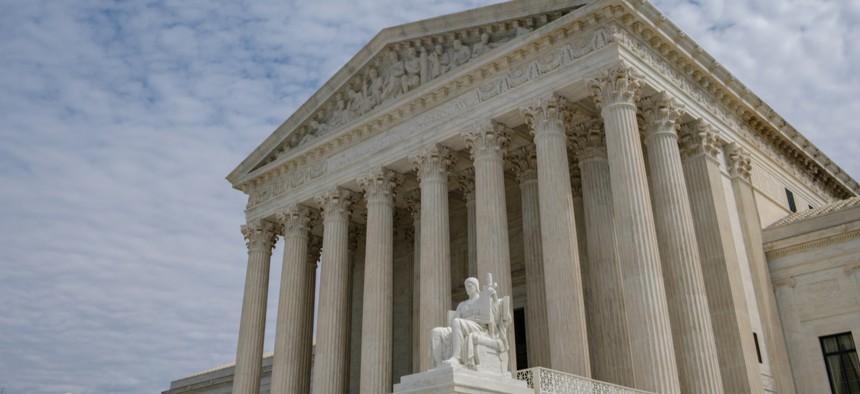
Shutterstock.com
Supreme Court Makes It Easier for Feds to Prove Age Discrimination
In an 8-1 decision, justices found that the “plain language” of the Age Discrimination in Employment Act has a lower burden of proof for proving differential treatment based on age in the federal government than the private sector.
The Supreme Court on Monday ruled that federal workers have a lower bar for proving they were discriminated against on the basis of age than employees in the private sector.
In an 8-1 decision in Babb v. Wilkie, the justices found that the Age Discrimination in Employment Act sets two separate burdens for prohibiting age discrimination by an employer. While in the private sector, employees must prove “but for cause,” meaning age discrimination was the deciding factor in an employment decision, federal agencies must ensure their personnel actions are free from any “taint” of differential treatment.
In the case, a Veterans Affairs Department pharmacist alleged that the department subjected her to age and sex discrimination by denying her promotion and training opportunities in 2013. But the government argued that age was not the deciding factor in any of these decisions, and that the same “but for cause” standard should apply to federal agencies.
“Which interpretation is correct?” asked Justice Samuel Alito, writing for the majority. “To decide, we start with the text of the statute . . . and as it turns out, it is not necessary to go any further. The plain meaning of the statutory text shows that age need not be a but-for cause of an employment decision in order for there to be a violation of [the age discrimination law].”
Key to the difference between standards for the federal government and the private sector is the phrase “free from any discrimination based on age,” Alito wrote.
He laid out a scenario where a 55-year-old employee and a 35-year-old employee vied for the same promotion and in a 100-point scale. The older employee was docked five points based on their age, but the younger employee would still have won by five points without the differential treatment.
“This decision was not ‘made’ ‘free from any discrimination’ because employee B was treated differently (and less favorably) than employee A (because she was docked five points and A was not),” Alito wrote. “And this discrimination was ‘based on age’ because the five points would not have been taken away were it not for employee B’s age. It is true that this difference in treatment did not affect the outcome, and therefore age was not a but-for cause of the decision to promote employee A . . . But under the language of [the statute], this does not preclude liability.”
Despite finding that the standard for proving discrimination is different for federal workers, the justices ruled that federal employees still must prove but-for causation in order to receive reinstatement, back pay and compensatory damages. Without proof that the outcome would have been different absent age discrimination, plaintiffs are limited to obtaining relief via forcing agencies to make changes in training, policy and the like.
“Although unable to obtain [some forms] of relief, plaintiffs are not without a remedy if they show that age was but-for cause of differential treatment in an employment decision but not a but-for cause of the decision itself,” Alito wrote. “In that situation, plaintiffs can seek injunctive or other forward-looking relief.”
The court’s lone dissenter was Clarence Thomas, who claimed that the decision places an impossible burden on federal managers.
“This rule is so broad that a plaintiff could bring a cause of action even if he is ultimately promoted or hired over a younger applicant,” Thomas wrote. “This novel ‘any consideration’ standard does serious damage to our interpretation of antidiscrimination statutes and disrupts the settled expectations of federal employers and employees.”
Thomas also argued that if Congress had intended two different standards for proving age discrimination it would have provided a distinct manner by which employees could seek relief, rather than leaving it up to the courts to come up with forward-looking injunctive relief.
“It is incongruous to suggest that Congress could have intended to incorporate a remedial scheme that appears not to have existed at the time the statute was passed,” he wrote. “The court fails to provide any explanation as to why it is appropriate to rely on judicially fashioned remedies for constitutional injuries in this purely statutory context.”







